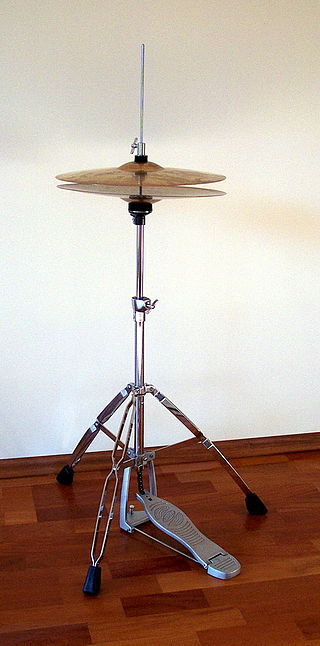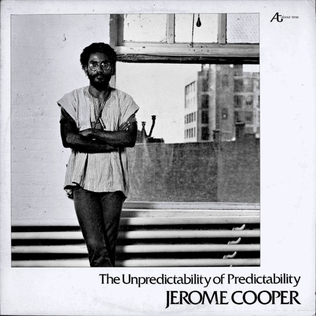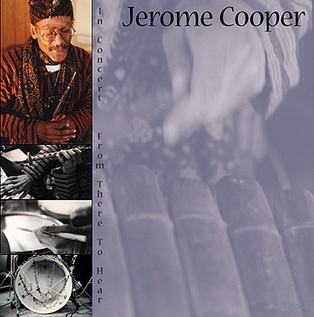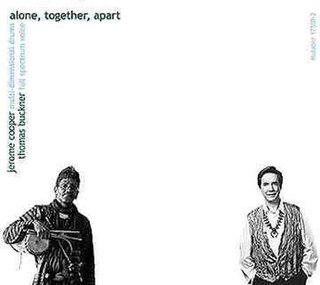
A drum kit is a collection of drums, cymbals, and sometimes other auxiliary percussion instruments set up to be played by one person. The drummer typically holds a pair of matching drumsticks, and uses their feet to operate hi-hat and bass drum pedals.

A hi-hat is a combination of two cymbals and a pedal, all mounted on a metal stand. It is a part of the standard drum kit used by drummers in many styles of music including rock, pop, jazz, and blues. Hi-hats consist of a matching pair of small to medium-sized cymbals mounted on a stand, with the two cymbals facing each other. The bottom cymbal is fixed and the top is mounted on a rod which moves the top cymbal toward the bottom one when the pedal is depressed.

In music performances, rhythm guitar is a technique and role that performs a combination of two functions: to provide all or part of the rhythmic pulse in conjunction with other instruments from the rhythm section ; and to provide all or part of the harmony, i.e. the chords from a song's chord progression, where a chord is a group of notes played together. Therefore, the basic technique of rhythm guitar is to hold down a series of chords with the fretting hand while strumming or fingerpicking rhythmically with the other hand. More developed rhythm techniques include arpeggios, damping, riffs, chord solos, and complex strums.

The Art Ensemble of Chicago is an avant-garde jazz group that grew out of the Association for the Advancement of Creative Musicians (AACM) in the late 1960s. The ensemble integrates many jazz styles and plays many instruments, including "little instruments": bells, bicycle horns, birthday party noisemakers, wind chimes, and various forms of percussion. The musicians would wear costumes and face paint while performing. These characteristics combined to make the ensemble's performances both aural and visual. While playing in Europe in 1969, five hundred instruments were used.

James Marcellus Arthur "Sunny" Murray was an American musician, and was one of the pioneers of the free jazz style of drumming.

A rhythm section is a group of musicians within a music ensemble or band that provides the underlying rhythm, harmony and pulse of the accompaniment, providing a rhythmic and harmonic reference and "beat" for the rest of the band. The rhythm section is often contrasted with the roles of other musicians in the band, such as the lead guitarist or lead vocals whose primary job is to carry the melody.
Joseph Jarman was an American jazz musician, composer, poet, and Shinshu Buddhist priest. He was one of the first members of the Association for the Advancement of Creative Musicians and a member of the Art Ensemble of Chicago.

Sidney "Big Sid" Catlett was an American jazz drummer. Catlett was one of the most versatile drummers of his era, adapting with the changing music scene as bebop emerged.

Thembi is the seventh album by free jazz saxophonist Pharoah Sanders, released in 1971.

Jazz drumming is the art of playing percussion in jazz styles ranging from 1910s-style Dixieland jazz to 1970s-era jazz fusion and 1980s-era Latin jazz. The techniques and instrumentation of this type of performance have evolved over several periods, influenced by jazz at large and the individual drummers within it. Stylistically, this aspect of performance was shaped by its starting place, New Orleans, as well as numerous other regions of the world, including other parts of the United States, the Caribbean, and Africa.
Jerome Douglas Cooper was an American free jazz musician. In addition to trap drums, Cooper played balafon, chirimia and various electronic instruments, and referred to himself as a "multi-dimensional drummer," meaning that his playing involved "layers of sounds and rhythms". AllMusic reviewer Ron Wynn called him "A sparkling drummer and percussionist... An excellent accompanist". Another Allmusic reviewer stated that "in the truest sense this drummer is a magician, adept at transformation and the creation of sacred space".

Afternoon of a Georgia Faun is an album by American jazz saxophonist Marion Brown recorded on August 10, 1970 and released on ECM later that year. The sextet features fellow saxophonists Anthony Braxton and Bennie Maupin, pianist Chick Corea, and vocalists Jeanne Lee and Gayle Palmore, backed by two percussionists on one side and five on the other.

Damion Reid is an American drummer. Critics have praised his "controlled fury" and "microscopically complex beats."

Heavy metal drumming is a style of rock music drum kit playing that developed in the late 1960s and early 1970s, largely in the United States and the United Kingdom. With roots in blues rock and psychedelic/acid rock drum playing, heavy metal drummers play with emphatic beats, and overall loudness using an aggressive performing style. Heavy metal drumming is traditionally characterized by emphatic rhythms and dense bass guitar-and-drum sound.

The People's Republic is an album by the Revolutionary Ensemble, violinist Leroy Jenkins, bassist Sirone and drummer Jerome Cooper, which was recorded in late 1975 and released on the A&M/Horizon label the following year.

For the People is a live album by Jerome Cooper. It was recorded in May 1979 at The Kitchen in New York City, and was released on LP by Hat Hut Records in 1980. On the album, Cooper, who plays a variety of instruments, including drums, chirimia, African balaphone, and whistle, is joined by Oliver Lake, who performs on alto saxophone, flute, bells, and vocals.

The Unpredictability of Predictability is a live solo percussion album by Jerome Cooper. It was recorded in July 1979 at Soundscape in New York City, and was released on LP by About Time Records later that year.

In Concert: From There to Hear is a live solo percussion album by Jerome Cooper. It was recorded during 1995–1998 at concerts presented at Roulette and The Knitting Factory in New York City, and was released by Mutable Music in 2001.

Alone, Together, Apart is a live album by percussionist Jerome Cooper and vocalist Thomas Buckner. It was recorded in April 2002 at Lotus Music and Dance Studio in New York City, and was released by Mutable Music in 2003.

A Magical Approach is a live solo percussion album by Jerome Cooper. The first track was recorded in April 1978 at Environ in New York City, while the remaining tracks were recorded in September 2007 at an AACM concert in New York City. The album was released by Mutable Music in 2010.


















